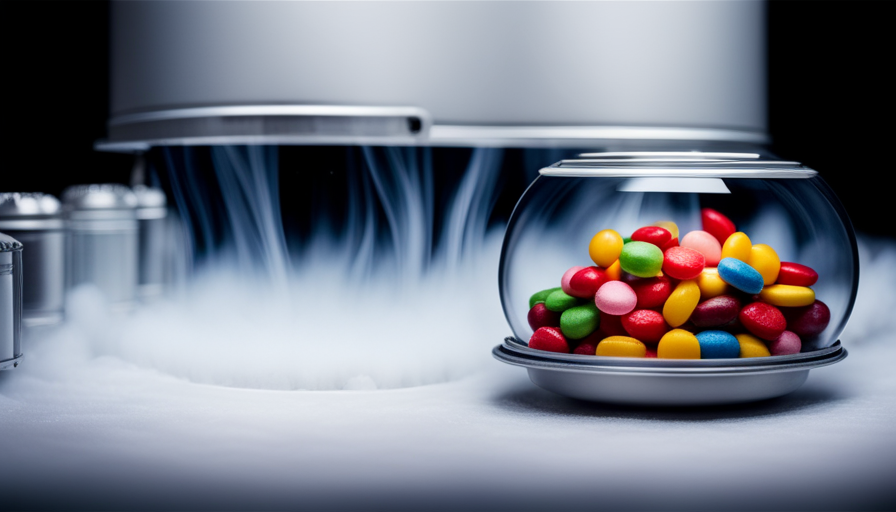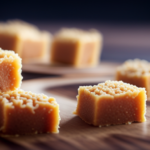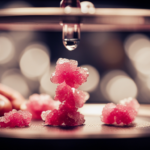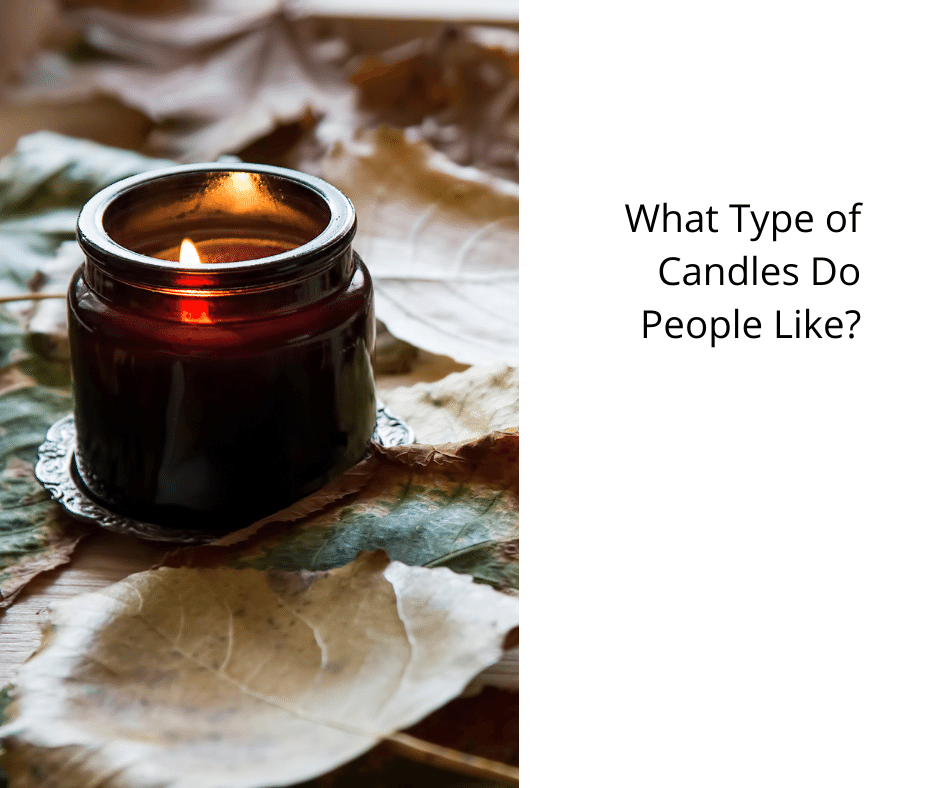Are you interested in learning about freeze-drying candy? Well, prepare yourself for an exciting adventure into the world of food science! Freeze-drying is a complex process that requires the right equipment, careful planning, and a touch of creativity. But fear not, as I am here to guide you through this amazing journey.
Picture this: your favorite candy, transformed into a crunchy, bite-sized morsel that retains its flavor and texture for ages. It’s like magic, only better! But before we dive into the nitty-gritty, let me give you a glimpse into the freeze-drying process.
First things first, you need to select the right candy. Not all sweets were created equal in the face of freeze-drying.
Then, gather your arsenal of equipment, from a freeze-dryer to packaging materials.
Now, it’s time to prepare your candy for its freeze-drying journey.
But hold on, we’re just scratching the surface! In this article, we’ll cover everything from loading the candy into the freeze-dryer to post-freeze-drying steps.
I’ll even share some tips and tricks for successful freeze-drying and creative ways to use your newfound freeze-dried candy.
But, my dear reader, remember: safety first! We’ll discuss essential safety precautions and considerations to ensure you embark on this candy freeze-drying endeavor with confidence.
So, get ready to dive into the world of freeze-drying, and let’s turn your favorite candy into a shelf-stable masterpiece!
Key Takeaways
- Proper equipment, preparation, and finesse are needed for freeze-drying candy.
- Choose solid candies without fillings or coatings for best results.
- Cut or break candy into smaller, uniform pieces for even freezing and drying.
- Store freeze-dried candy in airtight containers or vacuum-sealed bags for extended shelf life.
Understanding the Freeze-Drying Process
You’ll want to visualize the freeze-drying process as a magical transformation, where the candy goes from being a delightful treat to a perfectly preserved, crunchy delight. Understanding the freeze-drying process is essential to successfully freeze-drying candy.
It involves removing moisture from the candy through a process called sublimation, where water transitions directly from a solid (ice) to a gas (water vapor) without passing through the liquid phase. This is achieved by placing the candy in a vacuum chamber and subjecting it to low temperatures.
The benefits of freeze-drying candy are numerous. Firstly, it significantly extends the shelf life of the candy, allowing you to enjoy it for a longer period. Secondly, freeze-dried candy retains its original flavor, texture, and appearance, making it an ideal preservation method. Additionally, freeze-dried candy is lightweight and easy to transport, making it perfect for on-the-go snacking or gifting.
To successfully freeze-dry candy, it is important to select the right type of candy. Ideally, choose candies that are solid and do not contain fillings or coatings that may affect the freeze-drying process. Hard candies, gummy candies, and chocolate bars are great options. Avoid candies with high moisture content or those that will not hold their shape during the freeze-drying process.
Properly understanding the freeze-drying process and selecting the right candy will ensure a successful and delicious freeze-dried candy experience.
Selecting the Right Candy
Choose the perfect type of candy to be transformed into a lightweight, crunchy treat through the freeze-drying process. When selecting candy for freeze-drying, consider the flavors and shapes that will enhance the overall experience.
-
Choosing Candy Flavors: Experiment with a variety of candy flavors to cater to different preferences. Opt for candies that have vibrant and bold flavors, such as fruity or minty candies. These flavors tend to retain their intensity even after the freeze-drying process. Avoid candies with delicate or subtle flavors, as they may become muted or lost during freeze-drying.
-
Experimenting with Candy Shapes: Explore different candy shapes to add visual appeal and textural variety to the freeze-dried treat. Consider candies with interesting shapes that can withstand the freeze-drying process without losing their form or becoming too fragile. Think about candies like gummy bears, hard candies, or even chocolate-covered treats. These candies can retain their shape and provide a satisfying crunch after freeze-drying.
-
Enhancing Taste and Texture: To enhance the taste and texture of freeze-dried candy, consider coating the candies with a thin layer of sugar, chocolate, or other flavorings before freeze-drying. This additional layer can help preserve the candy’s flavor and add a delightful crunch.
By carefully selecting candy flavors and experimenting with various shapes, you can create a freeze-dried treat that appeals to different tastes and textures.
Now that you’ve chosen the perfect candy, let’s move on to gathering the necessary equipment for the freeze-drying process.
Gathering the Necessary Equipment
After carefully selecting the perfect candy to transform into a lightweight, crunchy treat, it’s time to gather all the necessary equipment for the freeze-drying process.
Understanding the process is essential to ensure a successful outcome. The first piece of equipment needed is a freeze dryer, which removes moisture from the candy while preserving its texture and flavor. A vacuum pump is also necessary to create a low-pressure environment that facilitates sublimation, the process by which water transitions directly from a solid to a gas. Additionally, a condenser is required to collect the water vapor released during sublimation and convert it back into a solid.
To protect the candy from freezer burn, airtight containers or vacuum-sealed bags should be used. Lastly, gloves and an apron are recommended to maintain hygiene and prevent contamination during the freeze-drying process.
With all the necessary equipment in hand, we can now move on to preparing the candy for freeze-drying by ensuring it is clean and properly arranged on trays.
Preparing the Candy for Freeze-Drying
First, I remove any packaging from the candy to ensure that only the candy itself is being freeze-dried. This eliminates the risk of the packaging melting or affecting the texture and taste of the candy during the freeze-drying process.
Next, I carefully cut or break the candy into smaller pieces. This allows for a faster and more efficient freeze-drying process, as it increases the surface area of the candy and promotes even freezing and drying.
Lastly, I ensure that the candy pieces are uniform in size to ensure consistent results and prevent any pieces from melting or becoming overly dry during the freeze-drying process.
Removing any packaging
To properly freeze-dry candy, it’s crucial to remove any packaging beforehand. This ensures that the candy is fully exposed to the freeze-drying process and allows for the removal of excess moisture. Here are two important steps to follow when removing packaging:
-
First, carefully unwrap the candy from any plastic or paper wrapping. Be gentle to avoid damaging the candy itself.
-
Next, check for any additional packaging materials such as foil or cardboard inserts. Remove these as well to ensure that only the candy is being freeze-dried.
By removing all packaging, you can ensure that the candy is fully sealed before freeze-drying. This will prevent any moisture from entering the candy during the process.
Once the packaging is removed, you can move on to cutting or breaking the candy into smaller pieces, which will be discussed in the next section.
Cutting or breaking the candy into smaller pieces
To ensure a successful freeze-drying process, the next step after removing any packaging is to cut or break the candy into smaller pieces. This allows for more efficient freezing and drying, as it increases the surface area exposed to the freezing methods. There are various cutting techniques that can be employed depending on the type of candy. For example, hard candies can be easily broken into smaller fragments using a mallet or hammer, while soft candies can be sliced with a sharp knife. Additionally, some candies may require special cutting tools like cookie cutters or molds to achieve desired shapes. Once the candy is properly cut, it is ready to be loaded into the freeze-dryer, where the magic of preserving its texture and flavor will take place.
Loading the Candy into the Freeze-Dryer
When loading the candy into the freeze-dryer, it’s crucial to space the candy evenly on the trays to ensure uniform drying. This will allow for consistent results and prevent any uneven areas that may result in over-drying or under-drying.
Additionally, maximizing the capacity of the machine is essential to optimize the production process and maximize efficiency. By arranging the candy in a way that utilizes the available space effectively, we can increase the quantity of candy that can be freeze-dried in each batch, ultimately saving time and resources.
Spacing the candy evenly on trays
Arrange your candy on the trays like stars in the night sky, ensuring each piece is spaced evenly for optimal freeze-drying. Proper tray arrangement and candy placement are crucial to achieve consistent results.
Begin by selecting trays that fit the size of your candy. Place the candies on the trays with enough space between them to allow for air circulation. Avoid overcrowding, as this can lead to uneven drying and potential sticking.
To maximize the capacity of the machine, make sure to utilize all available tray space while maintaining the recommended spacing. This will ensure efficient freeze-drying and prevent any wasted space.
By carefully spacing your candy on the trays, you will create the ideal conditions for effective freeze-drying, setting the stage for the next step: maximizing the capacity of the machine.
Maximizing the capacity of the machine
You can truly unlock the full potential of the machine by cleverly utilizing every inch of available tray space, creating a symphony of efficiency that will leave you in awe.
To maximize efficiency and optimize drying time, consider the following strategies:
- Arrange the candy in a single layer on each tray, ensuring that there’s enough space between each piece for proper airflow.
- Place smaller candies in the gaps between larger ones to minimize wasted space.
- Use tray dividers or molds to create separate compartments for different types of candy, allowing for simultaneous drying of multiple varieties.
By implementing these techniques, you can significantly increase the capacity of the machine and improve the overall efficiency of the freeze-drying process. This will ultimately reduce the drying time and allow you to operate the freeze-dryer more effectively.
Transitioning into the subsequent section about operating the freeze-dryer, it’s important to understand the various settings and controls to achieve optimal results.
Operating the Freeze-Dryer
To operate the freeze-dryer, I begin by setting the appropriate temperature and pressure for the freeze-drying process. This involves carefully adjusting the controls to ensure that the temperature is low enough to freeze the candy and the pressure is optimal for sublimation to occur.
Once the settings are in place, I closely monitor the progress of the freeze-drying process, checking the temperature and pressure gauges regularly to make sure they remain within the desired range. This meticulous attention to detail ensures that the candy is freeze-dried efficiently and effectively.
Setting the appropriate temperature and pressure
Find the perfect balance of temperature and pressure to create the most delectable freeze-dried candy experience. Setting the appropriate temperature and pressure is crucial in optimizing the freeze drying parameters. It requires careful precision to ensure the candy is preserved and retains its taste, texture, and shape. Below is a table showcasing the recommended temperature and pressure ranges for different types of candy:
| Candy Type | Temperature Range (°F) | Pressure Range (mTorr) |
|---|---|---|
| Gummy Bears | 100-110 | 50-100 |
| Chocolate Bars | 110-120 | 75-125 |
| Hard Candies | 90-100 | 40-80 |
By adjusting the temperature and pressure within these ranges, you can achieve the ideal freeze-drying conditions for each candy type. This delicate balance ensures that the candy is thoroughly dried without losing its flavor or becoming too brittle. Monitoring the progress of the freeze-drying process allows you to make any necessary adjustments and ensure the candy is freeze-dried to perfection.
Monitoring the progress of the freeze-drying process
After setting the appropriate temperature and pressure, it’s crucial to closely monitor the progress of the freeze-drying process to ensure optimal results.
Various monitoring techniques can be employed to track the status of the candy throughout the process. One common method is visually inspecting the candy to observe any changes in appearance or texture. Additionally, weight measurements can be taken at regular intervals to determine the amount of moisture being removed. Troubleshooting tips can also be utilized during the monitoring process to address any issues that may arise, such as uneven drying or condensation.
By actively monitoring the freeze-drying process, adjustments can be made to temperature, pressure, or other parameters as needed to achieve the desired outcome.
Transitioning into the subsequent section about post-freeze-drying steps, it’s important to address the final steps required to prepare the freeze-dried candy for storage or consumption.
Post-Freeze-Drying Steps
Once the candy has been freeze-dried, it transforms into a light and airy treat that melts in your mouth. However, the post-freeze-drying steps are crucial to ensure the candy remains in its delectable state.
Proper storage is essential to maintain the candy’s quality and flavor. After freeze-drying, it’s important to store the candy in an airtight container to prevent moisture absorption, which can lead to rehydration and spoilage. Glass jars with tight-fitting lids or vacuum-sealed bags are excellent options for post-freeze-drying storage. These containers provide a barrier against moisture and help preserve the candy’s crisp texture and intense flavors.
Another crucial aspect of post-freeze-drying is packaging. Once the candy is fully freeze-dried and stored, it can be packaged for gifting or commercial purposes. Consider using resealable bags or individual candy wrappers for easy portioning and convenient consumption. Additionally, labeling the packaging with the candy’s name, ingredients, and expiration date is important for both consumers and regulators.
The post-freeze-drying steps involve proper storage and packaging options to maintain the candy’s quality and extend its shelf life. By using airtight containers and appropriate packaging materials, the candy can be preserved for an extended period. These steps ensure that the freeze-dried candy retains its light and airy texture while also enhancing its flavor.
Now, let’s move on to some tips and tricks for successful freeze-drying.
Tips and Tricks for Successful Freeze-Drying
To ensure successful freeze-drying, it’s essential to follow these handy tips and tricks for maximizing efficiency and troubleshooting common issues.
First, make sure to choose the right candy for freeze-drying. Opt for candies with low moisture content and avoid those with fillings or coatings that may not freeze-dry well.
Secondly, ensure that your freeze-dryer is properly calibrated and maintained. This includes checking the temperature and pressure settings, as well as regularly cleaning and defrosting the machine.
Thirdly, always pre-freeze your candy before placing it in the freeze-dryer. This helps to preserve the shape and texture of the candy during the drying process.
Lastly, be patient and avoid rushing the freeze-drying process. It can take several hours to days for the candy to fully dry, depending on its size and moisture content.
By following these tips and tricks, you can maximize the efficiency of your freeze-drying process and troubleshoot common issues that may arise.
Now, let’s move on to explore some creative ways to use freeze-dried candy in various culinary applications.
Creative Ways to Use Freeze-Dried Candy
After mastering the tips and tricks for successful freeze-drying, it’s time to explore the exciting world of creative ways to use freeze-dried candy. With its light and crispy texture, freeze-dried candy can add a unique twist to your recipes and make for delightful treats.
One creative recipe idea is to incorporate freeze-dried candy into homemade ice cream or yogurt. Simply crush the freeze-dried candy into small pieces and mix it into your base before freezing. The result is a burst of flavor and a satisfying crunch in every bite.
Another great use for freeze-dried candy is in baking. You can add it to cookies, cakes, and even bread for a surprising and delicious twist. Imagine the joy of biting into a chocolate chip cookie with freeze-dried strawberry pieces or a banana bread with crushed freeze-dried pineapple. The possibilities are endless!
If you’re looking for unique gift ideas, consider creating custom trail mix or snack mixes using freeze-dried candy. Mix it with nuts, dried fruits, and other tasty ingredients, and package it in decorative jars or bags. It’s a thoughtful and personalized gift that will surely impress.
Now that we’ve explored some creative ways to use freeze-dried candy, let’s move on to the next section where we will discuss safety precautions and considerations when freeze-drying candy.
Safety Precautions and Considerations
Make sure you prioritize safety when experimenting with freeze-dried candy, as there are important precautions and considerations to keep in mind. Here are four key safety measures to follow:
-
Maintain a freezing temperature: When freeze-drying candy, it’s crucial to ensure that the temperature is consistently below freezing. This ensures that the water content in the candy freezes rapidly, allowing for efficient moisture removal during the drying process. Use a freezer or a dedicated freeze-drying machine to maintain the required low temperature.
-
Ensure proper ventilation: Freeze-drying candy involves sublimation, where water in the candy turns directly into vapor without passing through the liquid phase. This process releases water vapor and other gases, which need to be vented out properly. Make sure you perform freeze-drying in a well-ventilated area to prevent the buildup of potentially harmful gases.
-
Use appropriate protective gear: When handling freeze-dried candy, wear gloves to protect your hands from extreme cold temperatures. Additionally, consider wearing safety goggles to shield your eyes from any potential splatters or debris.
-
Follow manufacturer instructions: Different freeze-drying machines may have specific safety guidelines and operating procedures. Always read and follow the manufacturer’s instructions carefully to ensure safe and effective freeze-drying of your candy.
By following these safety precautions and considerations, you can enjoy the process of freeze-drying candy while minimizing any potential risks.
Frequently Asked Questions
Can any type of candy be freeze-dried, or are there certain types that work better than others?
Some candies are more suitable for freeze-drying than others, and the process can have varying effects on taste and texture. While any type of candy can be freeze-dried, certain candies tend to fare better.
Freeze-drying can alter the taste of the candy, sometimes intensifying flavors or causing them to become more concentrated. Additionally, the texture of freeze-dried candy can be different from regular candy, resulting in a crispy or crunchy texture that some people find enjoyable.
How long does the freeze-drying process typically take for candy?
The freeze-drying process typically takes several hours to complete for candy. During freeze-drying, the candy is first frozen to a very low temperature. Then, through a process called sublimation, the frozen water in the candy is converted directly to vapor without going through a liquid phase. This results in the removal of water from the candy, which significantly affects its texture.
The freeze-drying process generally preserves the original taste of the candy, but it can slightly alter the texture. Freeze-dried candy can be used in various culinary applications, such as dessert toppings or in baking recipes, to provide a unique and crunchy texture.
Is it necessary to pre-freeze the candy before loading it into the freeze-dryer?
It’s highly recommended to pre-freeze the candy before loading it into the freeze-dryer. Pre-freezing the candy has several benefits. Firstly, it helps to maintain the shape and structure of the candy during the freeze-drying process. Additionally, pre-freezing helps to remove excess moisture, which aids in the preservation of the candy’s texture and flavor.
Alternatives to freeze-drying for candy preservation include traditional drying methods, such as air drying or using a food dehydrator. However, freeze-drying is often preferred for its ability to retain the candy’s original taste and appearance.
Can freeze-dried candy be stored at room temperature, or does it need to be kept in a specific environment?
Freeze-dried candy can indeed retain its original flavor and texture. Studies have shown that freeze-drying preserves up to 98% of the candy’s original flavor, compared to other preservation methods. The process involves freezing the candy and then placing it in a vacuum chamber to remove the moisture.
This ensures that the candy stays crispy and delicious, even when stored at room temperature. The benefits of freeze-drying candy include extended shelf life, lightweight packaging, and the preservation of nutritional value.
Are there any special considerations or precautions to take when freeze-drying candy with fillings or coatings?
Special considerations when freeze-drying candy with fillings or coatings include ensuring that the fillings or coatings are compatible with the freeze-drying process. Some fillings may become too runny or lose their texture during freeze-drying, while certain coatings may become brittle or discolored.
Potential challenges in freeze-drying candy with different textures involve maintaining the integrity of the candy’s structure and preventing the formation of ice crystals. Properly addressing these considerations and challenges is crucial to achieving successful freeze-dried candy with intact fillings and coatings.
Conclusion
In conclusion, freeze-drying candy isn’t for the faint of heart. It requires meticulous preparation, a keen eye for detail, and a strong stomach for scientific processes. As you embark on this journey, be prepared to enter a world of freezing temperatures, precise measurements, and delicate handling.
The freeze-drying process is like a dance, where each step must be executed flawlessly to achieve the desired result. So, strap on your lab coat, grab your goggles, and get ready to take candy to a whole new level of preservation.
Happy freeze-drying!















